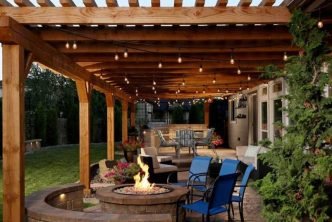Ponding water on a flat roof can be a major problem if not addressed promptly. It can cause damage to the roof and the structure of the building, and create a breeding ground for pests and mold. In this article, we will discuss some common causes of ponding water and what to do if water is ponding on a flat roof.
Causes of Ponding Water on a Flat Roof
- Poor Drainage
If the drainage system on your flat roof is not functioning properly, water will accumulate and pond. This can be caused by a variety of factors, including clogged drains, damaged or broken pipes, or a lack of proper slope on the roof. To fix this problem, you will need to identify the cause of the poor drainage and take steps to repair or replace the faulty components. This may involve cleaning out clogged drains, repairing or replacing damaged pipes, or adding a slope to the roof to promote better drainage.
- Debris
Debris such as leaves, twigs, and other organic matter can block the drainage system and cause water to pond. You can prevent this problem by regularly inspecting and cleaning your flat roof to remove any debris blocking the drains. You should also trim any trees overhanging your roof to prevent debris from accumulating on the surface.
Ponding water on your flat roof may also occur due to:
- Insufficient slope: Flat roofs are designed with a slight slope to allow water to drain off, but if the slope is not sufficient, water may pond on the roof.
- Heavy rain or snow: A heavy rainstorm or snowfall can overload the roof’s drainage system, causing water to pond on the roof.
- Clogged gutters: If the gutters on the roof are clogged, they may not be able to properly drain water away from the roof, resulting in ponding water.
- Damaged or worn roofing materials: If the roofing materials are damaged or worn, they may not be able to effectively drain water, leading to ponding.
Why Ponding Water is Bad For Your Flat Roof
Ponding water on a flat roof can be harmful for several reasons:
- Weight: Standing water can add a significant amount of weight to a roof, which can cause structural damage and even cause the roof to collapse.
- Damage to roofing materials: Ponding water can cause the roofing materials to become weakened or damaged, leading to leaks and further damage to the roof structure.
- Rot and mold growth: Standing water can create the perfect conditions for rot and mold growth, which can cause serious damage to the roof and potentially compromise the integrity of the roof structure.
- Reduced insulation: When water pools on a roof, it can reduce the effectiveness of the roof’s insulation, leading to increased energy costs and a less comfortable living or working environment.
- Increased risk of leaks: Ponding water can increase the risk of leaks, as the water can seep into the roof structure and cause damage to the underlying layers of the roof.
It is important to address the issue of ponding water on a flat roof as soon as possible to prevent further damage and ensure the longevity and integrity of the roof.
How to Prevent Ponding Water on Your Flat Roof
Some potential solutions to solve the problem of ponding water on a flat roof include:
- Cleaning and maintaining the roof’s drainage system: This can include flushing gutters and downspouts with water, unblocking drains, and repairing or replacing damaged or worn components.
- Adding additional drains or scuppers: If the roof does not have enough drainage points, adding additional drains or scuppers can help water flow off the roof more effectively.
- Increasing the slope of the roof: If the slope of the roof is insufficient, it may be necessary to add more material to the roof to create a steeper slope and improve drainage.
- Repairing or replacing damaged or worn roofing materials: If the roofing materials are in poor condition, repair or replace them to improve the roof’s ability to drain water.
- Installing a roof garden or green roof: A roof garden or green roof can help absorb and filter water, reducing the amount of ponding on the roof.
If ponding water on your flat roof is a persistent problem, you may need to consider installing a roof deck or adding additional layers of insulation. A roof deck is a layer of material that is installed on top of the roof to create a slope and promote better drainage. Additional layers of insulation can also help to create a slope on the roof and improve drainage.





